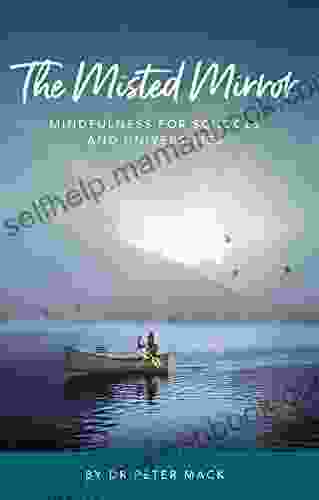Rage Is a Cage Without a Key: The Uncontrollable Fury within the Human Psyche

Rage, an all-consuming emotion, grips us like a vice, obscuring our reason and propelling us toward impulsive actions. It is a destructive force, capable of shattering relationships, careers, and even lives. Trapped within the confines of this emotional prison, we become slaves to our own anger, unable to break free from the chains that bind us.
Rage, like other emotions, has a physiological component. When triggered, the sympathetic nervous system releases a surge of hormones, including adrenaline and cortisol. These hormones prepare the body for the fight-or-flight response, increasing heart rate, blood pressure, and respiration. Muscles tense up, ready for action, and the digestive system slows down, diverting energy to the muscles.
This physiological arousal is accompanied by a flood of neurotransmitters, including dopamine and serotonin. These chemicals produce feelings of pleasure and power, reinforcing the aggressive behavior and making it difficult to resist.
4.3 out of 5
| Language | : | English |
| File size | : | 3372 KB |
| Text-to-Speech | : | Enabled |
| Screen Reader | : | Supported |
| Enhanced typesetting | : | Enabled |
| Word Wise | : | Enabled |
| Print length | : | 263 pages |
| Lending | : | Enabled |
While the physiological response to rage is largely instinctual, the psychological factors that trigger it are complex and varied. Rage can stem from a myriad of sources, including:
- Frustration and Impotence: When our goals are blocked or our needs are unmet, we may experience frustration and a sense of powerlessness. This frustration can escalate into rage, as we lash out at those we perceive as responsible for our predicament.
- Fear and Insecurity: Rage can also be a defense mechanism against underlying feelings of fear and insecurity. By projecting our anger onto others, we attempt to gain a sense of control and protect our fragile egos.
- Trauma and Abuse: Individuals who have experienced trauma or abuse may be more prone to rage as a result of unresolved emotional wounds. The anger they feel toward their abusers can generalize to other situations, leading to outbursts of violence or aggression.
- Cognitive Distortions: Our thoughts and beliefs can also contribute to rage. For example, if we perceive others as hostile or threatening, we may be more likely to react with anger. Similarly, if we believe that violence is an acceptable way to resolve conflict, we may be more prone to aggressive behavior.
The consequences of rage can be devastating. In the heat of the moment, we may say or do things we later regret. Rage-induced violence can lead to physical injury or even death. Additionally, uncontrolled anger can damage relationships, careers, and reputations.
Physically, chronic rage can take a toll on the body, increasing the risk of heart disease, stroke, and other health problems. Psychologically, rage can lead to feelings of guilt, shame, and low self-esteem.
While rage can be a powerful and destructive force, it is possible to break free from its chains. The key lies in understanding the underlying causes of our anger and developing strategies for managing it effectively.
The first step in managing rage is to identify the situations and people that typically trigger it. Once you know what sets you off, you can develop strategies to avoid or cope with these triggers.
When you feel anger rising, try to calm yourself down using relaxation techniques such as deep breathing, meditation, or yoga. These practices help to reduce stress and physiological arousal, making it easier to regain control.
It is important to find healthy ways to express your anger without hurting yourself or others. This could involve talking to a trusted friend or family member, writing in a journal, or participating in a support group.
Cognitive distortions can fuel rage. Challenge these negative thoughts and replace them with more positive and realistic ones. For example, instead of thinking "Everyone is out to get me," try "Most people are supportive and kind."
Conflict is a natural part of life. By learning effective conflict resolution skills, you can reduce the likelihood of anger escalating into rage. This involves listening actively to others, expressing your needs assertively, and finding mutually acceptable solutions.
If you struggle to manage your rage on your own, consider seeking professional help from a therapist or counselor. Therapy can provide a safe and supportive environment to explore the underlying causes of your anger and develop coping mechanisms.
Rage is a powerful and destructive emotion that can trap us in a prison of our own making. By understanding the physiological and psychological factors that trigger rage, and by developing strategies for managing it effectively, we can break free from its chains and reclaim our emotional freedom.
Remember, rage is not a sign of weakness or failure. It is simply a human emotion that, when controlled, can be a source of strength and empowerment. By embracing our anger and learning to harness its energy, we can transform it into a force for positive change in our lives and the world around us.
4.3 out of 5
| Language | : | English |
| File size | : | 3372 KB |
| Text-to-Speech | : | Enabled |
| Screen Reader | : | Supported |
| Enhanced typesetting | : | Enabled |
| Word Wise | : | Enabled |
| Print length | : | 263 pages |
| Lending | : | Enabled |
Do you want to contribute by writing guest posts on this blog?
Please contact us and send us a resume of previous articles that you have written.
 Top Book
Top Book Novel
Novel Fiction
Fiction Nonfiction
Nonfiction Literature
Literature Paperback
Paperback Hardcover
Hardcover E-book
E-book Audiobook
Audiobook Bestseller
Bestseller Classic
Classic Mystery
Mystery Thriller
Thriller Romance
Romance Fantasy
Fantasy Science Fiction
Science Fiction Biography
Biography Memoir
Memoir Autobiography
Autobiography Poetry
Poetry Drama
Drama Historical Fiction
Historical Fiction Self-help
Self-help Young Adult
Young Adult Childrens Books
Childrens Books Graphic Novel
Graphic Novel Anthology
Anthology Series
Series Encyclopedia
Encyclopedia Reference
Reference Guidebook
Guidebook Textbook
Textbook Workbook
Workbook Journal
Journal Diary
Diary Manuscript
Manuscript Folio
Folio Pulp Fiction
Pulp Fiction Short Stories
Short Stories Fairy Tales
Fairy Tales Fables
Fables Mythology
Mythology Philosophy
Philosophy Religion
Religion Spirituality
Spirituality Essays
Essays Critique
Critique Commentary
Commentary Glossary
Glossary Bibliography
Bibliography Index
Index Table of Contents
Table of Contents Preface
Preface Introduction
Introduction Foreword
Foreword Afterword
Afterword Appendices
Appendices Annotations
Annotations Footnotes
Footnotes Epilogue
Epilogue Prologue
Prologue Anna Garnet
Anna Garnet Tia Monique
Tia Monique Nikos Ordoulidis
Nikos Ordoulidis Samuel Taylor Coleridge
Samuel Taylor Coleridge Emma Robinson
Emma Robinson Michael Symon
Michael Symon Karen Anne Golden
Karen Anne Golden Kyra E Hicks
Kyra E Hicks Neil Ardley
Neil Ardley Kamel Sadi
Kamel Sadi John Anthony Davis
John Anthony Davis Kat Lehmann
Kat Lehmann Sheldon Cole
Sheldon Cole Heinrich Hoffmann
Heinrich Hoffmann Gerard Shaw
Gerard Shaw Amay Mehta
Amay Mehta William L Lassiter
William L Lassiter Clinton Mcrae Jr
Clinton Mcrae Jr Emma Curtis Hopkins
Emma Curtis Hopkins Amy Gaines
Amy Gaines
Light bulbAdvertise smarter! Our strategic ad space ensures maximum exposure. Reserve your spot today!

 Hank MitchellAviation Maintenance Technician Handbook: A Comprehensive Guide to Aircraft...
Hank MitchellAviation Maintenance Technician Handbook: A Comprehensive Guide to Aircraft... Douglas PowellFollow ·14.6k
Douglas PowellFollow ·14.6k Stuart BlairFollow ·18.8k
Stuart BlairFollow ·18.8k Benji PowellFollow ·19.2k
Benji PowellFollow ·19.2k Seth HayesFollow ·14.9k
Seth HayesFollow ·14.9k Felipe BlairFollow ·19.3k
Felipe BlairFollow ·19.3k Dan BrownFollow ·9.9k
Dan BrownFollow ·9.9k Federico García LorcaFollow ·12.1k
Federico García LorcaFollow ·12.1k Andy ColeFollow ·17.1k
Andy ColeFollow ·17.1k

 Boris Pasternak
Boris PasternakThe Misted Mirror: Mindfulness for Schools and...
What is The Misted...

 Holden Bell
Holden BellEmbark on Thrilling Adventures in the Uncharted Depths of...
Unveiling the Enchanting...

 Seth Hayes
Seth HayesDelphi Complete Works of Lucan: Illustrated Delphi...
This meticulously edited...

 Jackson Hayes
Jackson HayesThe Enigmatic Cat Burglar: Unraveling the Intriguing...
In the annals of crime, the name Bernie...

 Quentin Powell
Quentin PowellAligned With The Cisa Review Manual 2024 To Help You...
The CISA Review Manual 2024 is the most...

 Austin Ford
Austin FordUnlocking Revenue Potential: A Comprehensive Business...
In today's digital...
4.3 out of 5
| Language | : | English |
| File size | : | 3372 KB |
| Text-to-Speech | : | Enabled |
| Screen Reader | : | Supported |
| Enhanced typesetting | : | Enabled |
| Word Wise | : | Enabled |
| Print length | : | 263 pages |
| Lending | : | Enabled |










